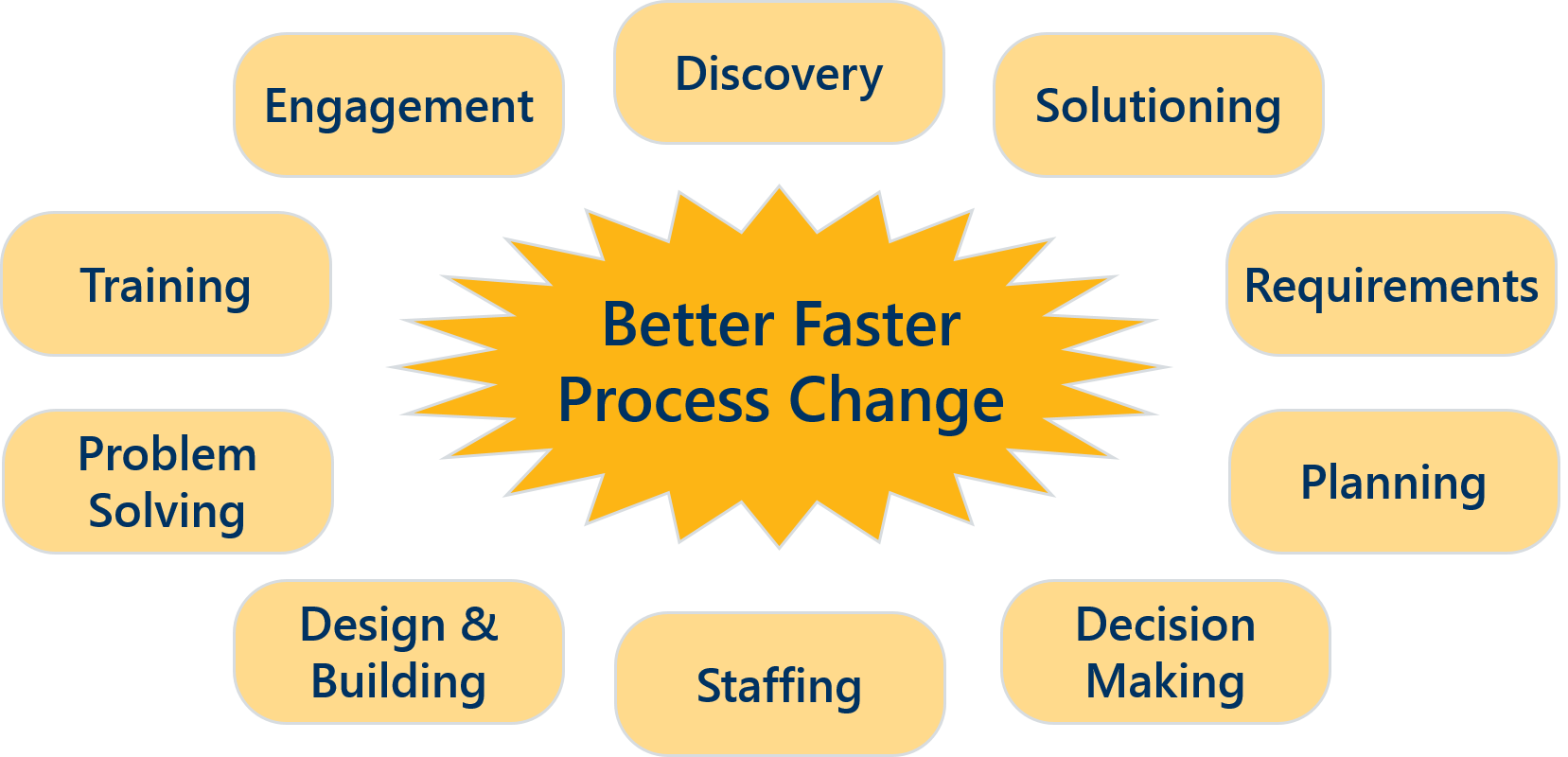Comparison with Other Methods
Is ActionMap a variation of other methods?
While ActionMap can be used for many of the same purposes as other methods, and can support other methods, it is not based on or derived from other widely known methods or disciplines, including Six Sigma, Lean, TQM/QA, Design Thinking, Systems Thinking, or Agile.
How does ActionMap compare to other diagram formats?
Can ActionMap be compared to commonly used business support tools, such as process diagramming, problem-solving, teambuilding, decision support, project planning, or action tracking?
ActionMap can be effectively used for many of the same purposes as those tools, however it does not provide a generalized feature set in any of those categories.
If ActionMap is not closely related to one of the above methods or tools, what is ActionMap’s primary value and purpose?
ActionMap’s primary value and purpose is to rapidly and reliably create strong shared understanding, agreement and commitment to take action, supported by high quality process diagrams, evaluations, and action item lists.
These results can be carried into other methods, in a broad range of organizational, business and technology situations.
The core functional activity of ActionMap is to work with a group of process stakeholders to convert their personal tacit knowledge of their tasks, views, interests and ideas into shared explicit knowledge of those tasks, views, interests and ideas.
The resulting explicit shared knowledge, along with the documentation, is a strong basis for supporting all of the purposes for all the tools and methods described above.
What techniques and technologies IS ActionMap based on?
ActionMap is a proprietary fusion of the following techniques:
A simplified, standardized version of a systems diagramming technique and format (data flow diagrams) that is used to rapidly create easy to understand process maps.
A particular way of prompting for, capturing, categorizing and sharing “evaluations” (subjective knowledge, views, opinions, interests and ideas) and other notes, and connecting those comments to specific parts of the process maps.
A simplified version of a generalized process improvement cycle, divided into short, easy to understand group activities.
A set of standard meeting facilitation techniques for turning general information into action items.
Built in detailed step-by-step instructions for all of the above.
Standard online meeting technologies.
How was ActionMap developed?
ActionMap started when Jim Johnson noticed that people reacted with energy and interest when shown data flow diagrams of their job functions. Jim pursued that energy and interest by applying the diagramming in different situations.
Later Jim and Anne Johnson worked on augmenting, structuring, simplifying and optimizing the method, with the design of the method following whatever worked best in live client workshops.
During the period of developing and documenting ActionMap, we only lightly researched other process improvement, meeting facilitation and teambuilding methods, and only adopted a few techniques from them.
After fully specifying the ActionMap method in a manuscript, we have seen where the steps are similar to parts of other methods, and where the action and results can be explained by existing theories and models.
Are there books or articles that describe the theory and principle of how ActionMap works?
The short answer is “no”.
ActionMap evolved over an extended series of meetings with many different companies, in which the ActionMap method was adjusted and optimized to produce the strongest results in terms of its primary value proposition, that is, to create strong shared understanding, agreement and commitment to take action, supported by high quality documentation.
At the same time, ActionMap was steadily codified into a highly repeatable set of easy to perform and easy to understand short activities.
While it is very interesting to consider HOW ActionMap works, and while we have written some material about it, ActionMap is intended to the greatest extent possible to be entirely performance-based. That is, it is a set of steps that works when performed as specified.
In our experience, attempting to explain or understand exactly how ActionMap produces its results does not make it easier or more effective for the method operator or for meeting participants to achieve those results.
We think it is much more useful for people to simply learn the method, use it, and then explore for themselves how they think it works, in terms of their existing frameworks (e.g. other methods and tools.)
What is the best way to understand ActionMap?
The best way to understand ActionMap is to apply it to familiar processes, starting with your own job or major activity or project that you are currently engaged in.
Detailed instructions for how to use the method for that purpose using only pencil and paper can be found at howtomapyourjob.com.
Accelerate Innovation

